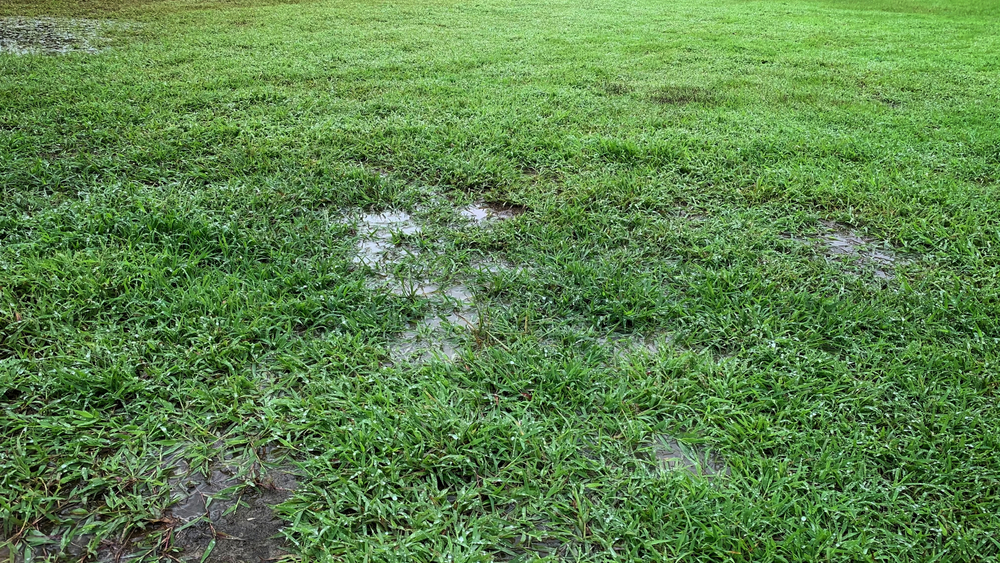If you’re a homeowner in or around Big Creek, GA, finding a puddle on your basement floor or dark water stains on the walls is more than just frustrating—it’s a common issue made worse by Georgia’s unpredictable weather. Heavy rains, high humidity, and sudden storms can all contribute to basement leaks and moisture problems.
Whether you’re using your basement for storage, a workshop, or extra living space, you need to know it will stay dry. The good news is that you can fix basement leaks. However, it starts with understanding where the water is coming from and taking the right steps to stop it. In this article, we’ll walk you through finding the source of a basement leak and explore practical ways to create a dry, reliable space.
Why Your Basement Leaks in the First Place
Before you can stop the water, you need to know why your basement water problem exists. Most of the time, water gets into your basement because of pressure from the outside. Two big reasons are almost always behind the mess in a wet basement.
First is hydrostatic pressure. After a heavy rain or as melting snow saturates the ground, the soil surrounding your home becomes heavy with excess water. This water pushes against your foundation walls and floor, and this pressure can force water through tiny cracks you might not even see.
This force is also powerful enough to push water through the pores in concrete, causing leaks and water damage. Over time, the constant hydrostatic pressure can weaken foundation walls. It’s one of the most common culprits behind a perpetually leaking basement.
The second cause is something called the clay bowl effect. When your home’s foundation was built, workers dug a large hole. After the foundation was set, they filled the gap with the dug-up soil, a process called backfilling. This backfilled soil is looser and absorbs water more easily than the undisturbed clay deeper down, creating a bowl that holds water right against your foundation.
Finding the Source of the Water
You can’t fix a problem you can’t find. Your first job is to play detective and figure out exactly how water can enter your basement. Look for the telltale signs of water infiltration, because water always leaves a trail.
Leaks at the Floor Joint
One of the most common entry points is where the basement walls meet the floor. This joint is a small gap that can open over time due to foundation settling. If you see water pooling along the room’s edges or a white, powdery substance on the masonry walls near the floor, that’s your spot.
Cracks in the Walls or Floor
Your home settles over time, and this movement can cause cracks in your concrete foundation walls or floor cracks. Even small hairline cracks can let a surprising amount of water through, leading to a significant basement wall leak. Look for vertical or stair-step cracks on a basement wall, which are classic signs of stress and water seepage.
Water Around Windows
Basement windows are another weak point for water leaking into your space. The window wells outside are supposed to drain water away, but can get clogged with leaves and dirt. When a well clogs, it fills with water, and that water pushes against your basement window and window frames until it finds a way in.
A Plumbing Problem?
Sometimes, the wall leak isn’t from the outside at all. A failing water heater, leaky pipes, or a broken washing machine hose could be the source. Check your appliances and pipes for drips or puddles before you assume you have a foundation problem.
| Source of Leak | What To Look For |
|---|---|
| Cove Joint (Wall/Floor) | Water along the perimeter of the floor, white mineral deposits (efflorescence) on the lower wall. |
| Wall Cracks | Visible vertical or stair-step cracks on foundation walls with dark water stains. |
| Window Wells | Puddles inside below the window, clogged debris in the well outside, and poor window sealing. |
| Plumbing | Drips or puddles directly around water heaters, pipes, or appliances. |
How You Can Stop Basement Leaks
Once you have a good idea of where the water is coming from, you can start taking action. Many repair solutions focus on managing water outside before it ever reaches your foundation. Here are a few practical steps you can take.
Improve Your Gutter System
Your gutters are your home’s first line of defense against water. If they’re clogged with leaves and debris, rainwater from heavy rainfall will just spill over the side. This saturates the ground right next to your foundation wall.
Cleaning your gutters twice a year is one of the most effective things you can do. Also, check your downspouts. They should extend at least 6 feet away from your house. This simple step directs water far from your basement wall.
Check the Grading Around Your Home
The ground around your foundation should slope away from the house, not toward it. You might need to bring in dense soil to build up the ground so water flows away from the home’s foundation.
Seal Cracks in the Foundation
For small cracks in the walls, you can use do-it-yourself (DIY) materials to stop water from seeping through. An epoxy injection or hydraulic cement can fill these gaps effectively. These products expand as they dry to create a strong, waterproof seal.
Remember, this is for small, non-structural cracks only. If you see large cracks or your basement walls seem to be bowing inward, that’s a sign of a much bigger issue needing professional foundation repair.
Clean and Maintain Window Wells
This is a quick and easy job. Just scoop out any leaves, dirt, and other gunk that has collected in your window wells. Making sure the drains at the bottom of the maintained window wells are clear lets water escape instead of building up against your basement windows.
Control Indoor Humidity
Even if you stop active leaks, your basement might still feel damp because of high humidity. A good dehumidifier can make a huge difference in the indoor air quality. It helps prevent musty odors and reduces the chances of mold growth and wood rot.
When DIY Isn’t Enough
You can handle many of these fixes yourself with a little bit of work. But it’s also important to know your limits. Some basement water problems need professional basement waterproofing services.
If you have large, horizontal cracks in your foundation or if your walls are bowing, these are signs of serious structural problems. If you have tried the DIY steps and still have a leaky basement after every storm, it’s time to call for help. A contractor can assess the situation and give you a free estimate for the repair costs.
A professional service can offer advanced repair solutions. This might include installing an interior drain system or a sump pump to handle heavy water flow and prevent basement flooding. For persistent dampness, they might suggest a vapor barrier on the basement walls to stop water seepage and improve the indoor air.
Conclusion
Facing a wet basement can feel overwhelming, but a dry basement is completely possible. The priority is to manage the water around your home first, starting with your gutters and the slope of your yard. Sealing small entry points and controlling humidity are also important parts of the puzzle.
By following the advice in this article, you can tackle many of the root causes of water intrusion. Taking these actions will help you fix basement leaks and reclaim your home’s lower level. If the basement repair job seems too big, remember that professional help is available to give you a permanently dry foundation.




